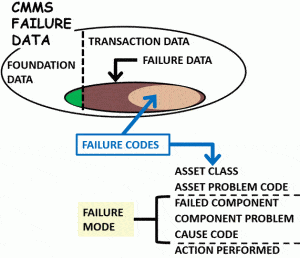
Joel Nachlas, Scholar
Fred interviews Joel Nachlas an author and the editor of the Reliability and Maintainability Symposium proceedings. He was also an associate professor emeritus of industrial and systems engineering at Virginia Tech.
Your Reliability Engineering Professional Development Site

Fred interviews Joel Nachlas an author and the editor of the Reliability and Maintainability Symposium proceedings. He was also an associate professor emeritus of industrial and systems engineering at Virginia Tech.
by James Kovacevic Leave a Comment

This episode is about the book, Reliability from a CMMS Perspective by John Reeve that will be coming out this fall. Often times, companies just implement a CMMS into th eir reliability programs and the software doesn’t live up their expectations. So, what exactly goes wrong with such kind of projects? How do they get it right? The simple answer may be is that they expect too much and too fast. The results from any SAAS oriented system take time and they require patience. Then there needs to be some sort of consultation between the reliability engineers and the management of the company if they are ever going to implement a CMMS correctly.
eir reliability programs and the software doesn’t live up their expectations. So, what exactly goes wrong with such kind of projects? How do they get it right? The simple answer may be is that they expect too much and too fast. The results from any SAAS oriented system take time and they require patience. Then there needs to be some sort of consultation between the reliability engineers and the management of the company if they are ever going to implement a CMMS correctly.
ᐅ Play Episode
by Andre Kleyner Leave a Comment

Andre and Fred discussing the value of the CRE for the field of reliability engineering.
ᐅ Play Episode
by Andre Kleyner Leave a Comment

Andre and Fred discussing the process of behind the ASQ Certified Reliability Engineer body of knowledge and exam.
ᐅ Play Episode
by James Kovacevic Leave a Comment

In this episode, the guest Fred Schenkelberg explains what is a good consultant? Whenever comes the question of performance in an organization—performance of assets—there is always a consultant involved who is helping you make your organization better at what you do. So what is a consultant? The consultants are mainly categorized into three major types. There are contractors who help you set things in motion or strategists who make strategic decisions for you. Then there are facilitators or internal ones who you hire for specific projects so that they can assist you just like an extra set of hands. The last ones are trusted advisors who help you every step of the way and if they are truly capable—which they usually are—with experience and expertise, they can really make a difference with the knowledge and insights that they have.
ᐅ Play Episode
by Adam Bahret Leave a Comment

Adam and Fred discussing the problem is too much data collected automatically. The goal is not to collect data, it is to support decisions with data.
ᐅ Play Episode
by Adam Bahret Leave a Comment

Adam and Fred discussing the often interesting, challenging and sometimes frustrating tasks before actually analyzing the data.
ᐅ Play Episode
by James Kovacevic Leave a Comment

This episode is about the leadership that is the very backbone of the successful organizations that perform exceptionally every year and get better and better with time under the experience of the leadership they have. But was it the same from the beginning? No, it wasn’t. Not every leadership is perfect right from the start. There are a lot of phases through which they get and they fail sometimes too but what they don’t do is look weak in front of the people whose entire lives depend on them. The successful leaders get wiser by the time by learning from their mistakes. But is there some sort of special criteria for being a leader? Technically yes but in general terms, every other person can be a leader if he believes so. He just needs to understand what the true meaning of leadership is.
ᐅ Play Episode
by Tim Rodgers Leave a Comment

Fred interviews Gerald Cohen a consultant with Ops A La Carte talks about his career and his early work in hybrid ceramic components for the Gemini space program and more.
by James Kovacevic Leave a Comment

James and Fred discussing balance between just fix it and doing the due diligence to learn how to really fix it right and avoid future failures.
ᐅ Play Episode
by James Kovacevic Leave a Comment

James and Fred discussing deferred maintenance and the balance between investment and delays.
ᐅ Play Episode
by Fred Schenkelberg Leave a Comment

HALT promises to find the weaknesses in your design early in the design process. Understanding the basic concepts underlying HALT enables you to do so effectively. Let’s discuss this essential discovery tool and how it fits into your program.
[Read more…]
by James Kovacevic Leave a Comment

This episode of the weekly podcast focuses on the education and training in maintenance and reliability. It is very important to practically implement the knowledge because that’s where you begin to develop skills and then you can improve those skills by continuously being a part of the applications in the field. The organizations like SMRP and eruditiollc.com help new people in the field of reliability by educating them first and then driving them to apply what they have learned. They help you whenever you need but they encourage the practice of self-driven learning because that is what helps you in the long run.
ᐅ Play Episode
by James Kovacevic Leave a Comment

James and Fred discussing gaining management support to move any reliability improvement program along.
ᐅ Play Episode

Kirk and Fred discussing the differences found between what is considered a “Quality” department issue, and what is a “Reliability” department issue.
ᐅ Play Episode